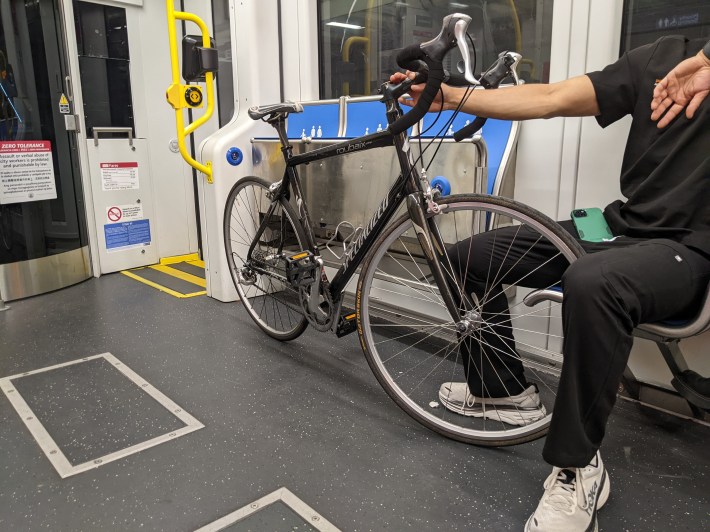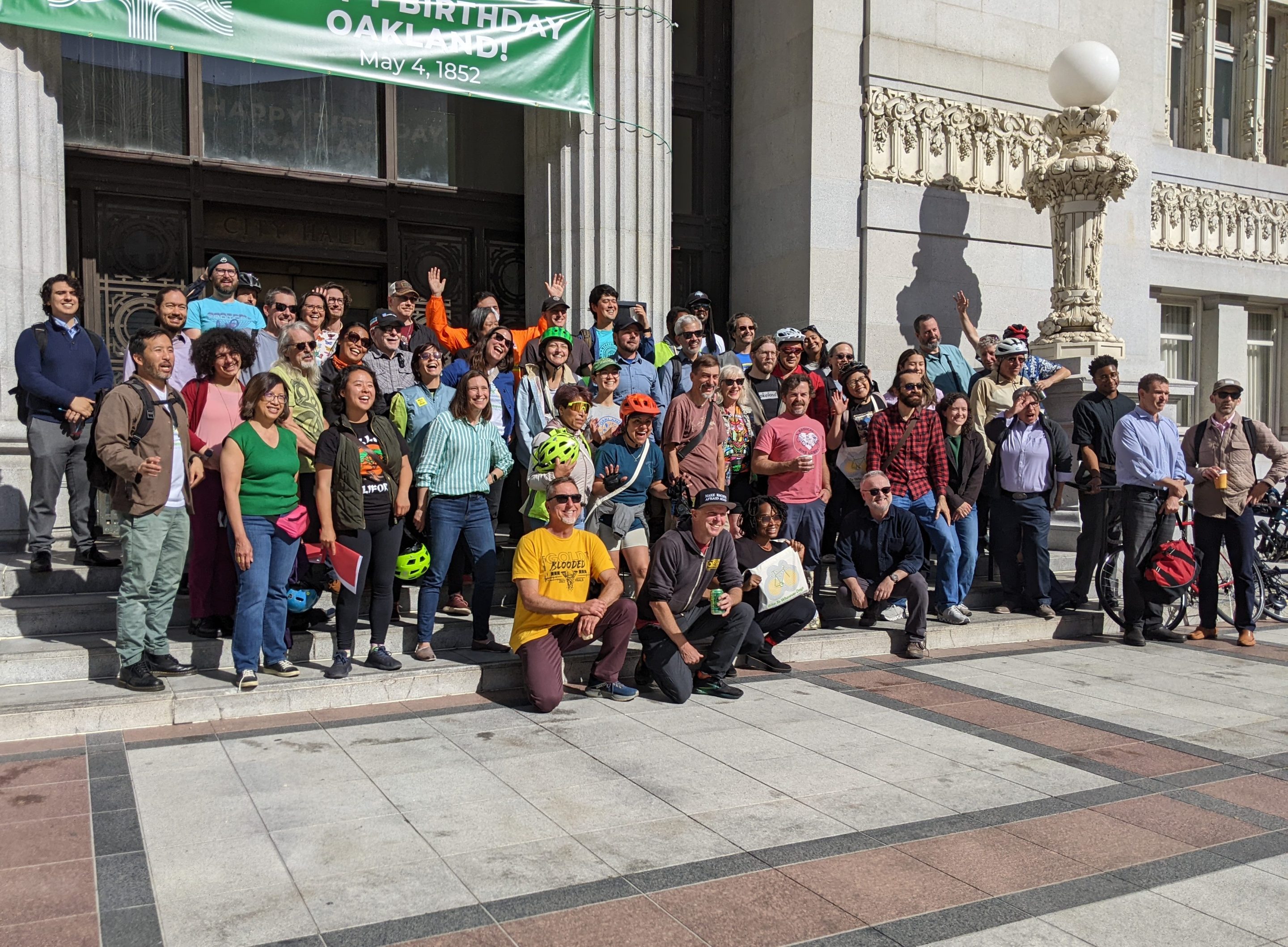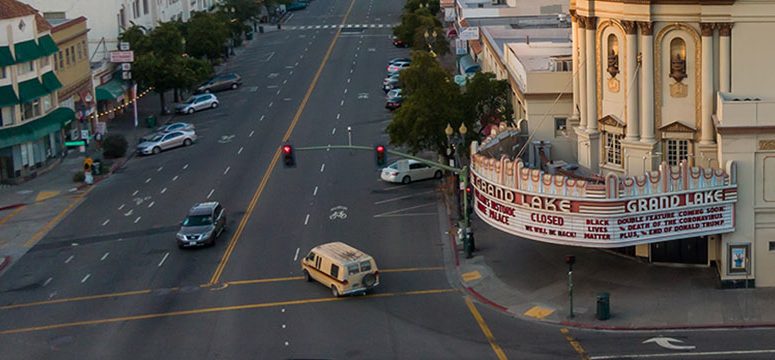"This is going to be overwhelmed with people biking," said Walk Oakland Bike Oakland's Chris Hwang at a bike-to-wherever day rally held on the steps of Oakland's City Hall Thursday morning. She motioned to the concrete-protected bike lanes under construction on 14th along the plaza. "It's going to be awesome."
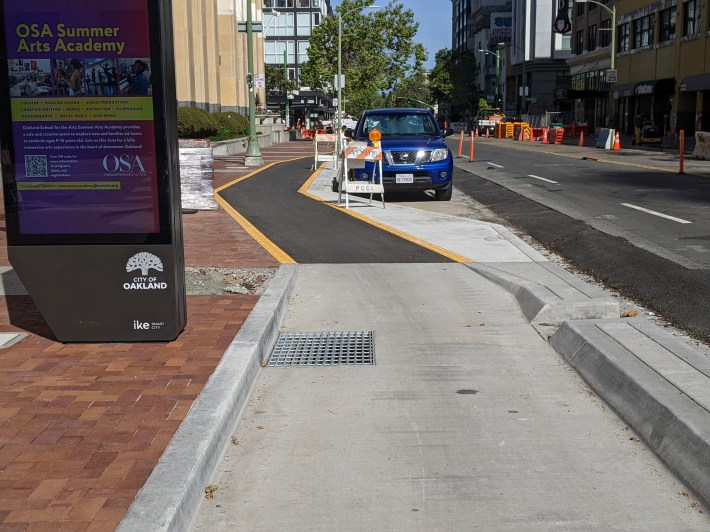
The speakers also talked about the expansion of protected bike lanes around Lake Merritt. And they acknowledged all the work that remains to be done. "I'm still fearful of riding because our lanes are not connected," said District 3 Councilmember Carroll Fife.
"This is about public safety," said AC Transit Boardmember and advocate Jean Walsh, who also spoke at the event about the synergy between transit and good bike infrastructure, which together encourage people to travel by something other than a car.
And she stressed how street safety is public safety. "If you're killed by a driver or a bullet or a fire, you're still dead."
That sentiment was underscored moments before. One of the many groups that rode to the event took Grand Avenue. They stopped on the way for a few minutes to pay respects to Michael Burawoy, who was killed by a driver while crossing Grand near Children's Fairyland, site of a long-delayed safety project.
On that subject, Carter Lavin of Traffic Violence Rapid Response wasn't giving a proverbial pass to the officials at the rally. As Oakland's politicians finished their speeches, Lavin took the mic to remind them that a project to add protected bike lanes and reduce motor-vehicle lanes to make Grand Avenue safe was getting seriously watered down by Oakland DOT director Josh Rowan.
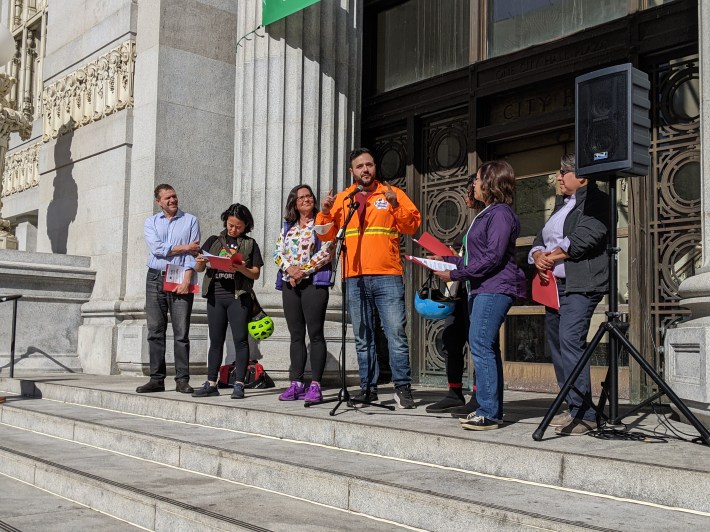
"There are two designs for Grand, but only one is first class," said Lavin before distributing letters of support from merchants and announcing that his group had emailed a petition with 1,800 signatures from supporters of the lane reduction to everyone on stage.
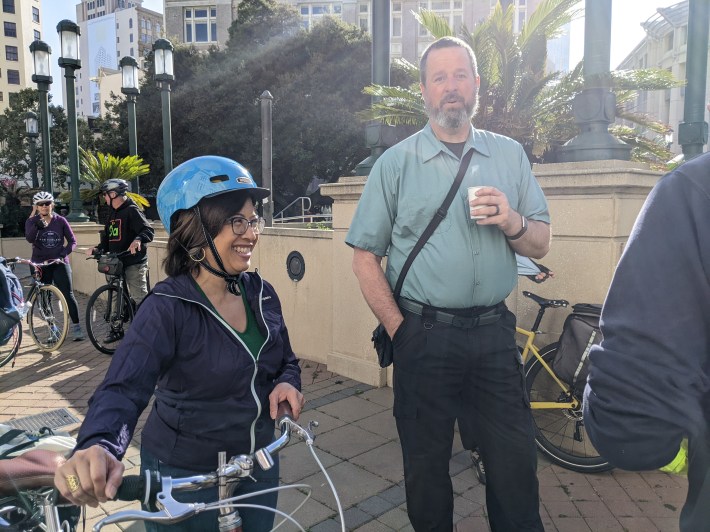
"I'm not talking about Grand today," Rowan told Streetsblog when asked why he blocked lane reductions.
Meanwhile, in that other city

Advocates and politicians on the other side of the Bay held their rally that afternoon on the steps of San Francisco City Hall. Many of the themes, of course, were similar. "Our administration is focused on public safety," said Mayor Daniel Lurie to the crowd. "And traffic safety is public safety." Lurie talked about the importance of technology in street safety, such as speed cameras. "The police are using drones to avoid dangerous chases."

"I fell in love with San Francisco from the seat of my bicycle," said the San Francisco Bicycle Coalition's Christopher White, in his address to the crowd. "80 percent of people want to bike, but the vast majority still don't feel safe to do so." The mission of the Coalition, he said, was to make it so everyone feels safe no matter how they get around. But, as if for the mayor's ears, he stressed that bringing more car traffic to Market Street will not help businesses. "Car traffic will not bring back foot traffic."
He urged cyclists to let merchants know when they bike to a shop, so they understand not all sales (or even most) come from drivers.
That was a point also made by District 4 Supervisor Joel Engardio, who talked about the success of Sunset Dunes park. "Come experience San Francisco at its best," he said, adding that people should bike to the park, buy stuff along the way, and let the merchants know how they got there. "The Outer Sunset has the best tacos, the best coffee."

As with the rally in Oakland, the need for synergy and cooperation between modes was a central theme. "Bike share is one of the most successful transportation systems in the city," said SFMTA's director Julie Kirschbaum. "Biking is fantastic. Walking is fantastic. But we also need good public transit to bring it all together," said state senator Scott Wiener.
Streetsblog questioned Kirschbaum about how that synergy works with Muni rail's ban on bikes—the only rail system in the country that still blocks cyclists from taking their steeds on board. "That's not something we're looking at," she said, adding that Muni bans bikes because of "constraints of the rail system." When asked to explain, she cited the existence of stairs.
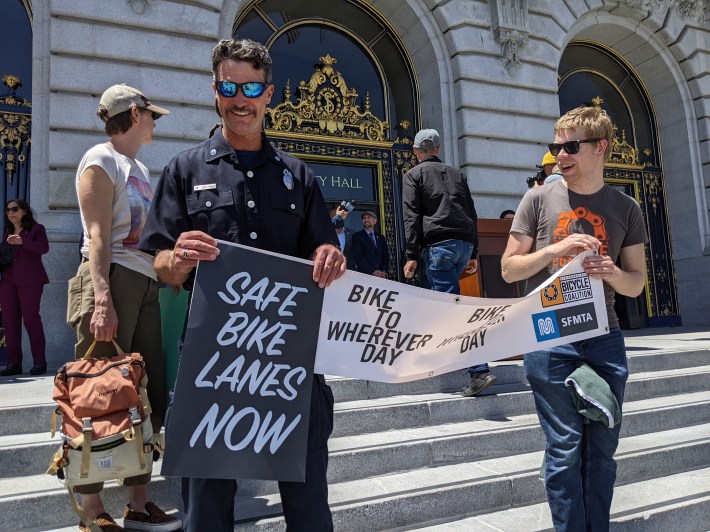
Of course, as Streetsblog pointed out, there are literally zero constraints unique to Muni rail (including stairs). Even Caltrain's cars have stairs. "I'd be in favor of bikes on Muni rail," said Engardio.
That said, "it was good to see so many elected officials today, including the mayor," said Streets Forward Luke Bornheimer. "But we need more protected bike lanes." Livable City's Tom Radulovich told Streetsblog he was happy with the roll-out of Valencia's new protected bike lanes. "It's my favorite iteration in the past two years," he joked. But he said there's still some finishing work to be done.
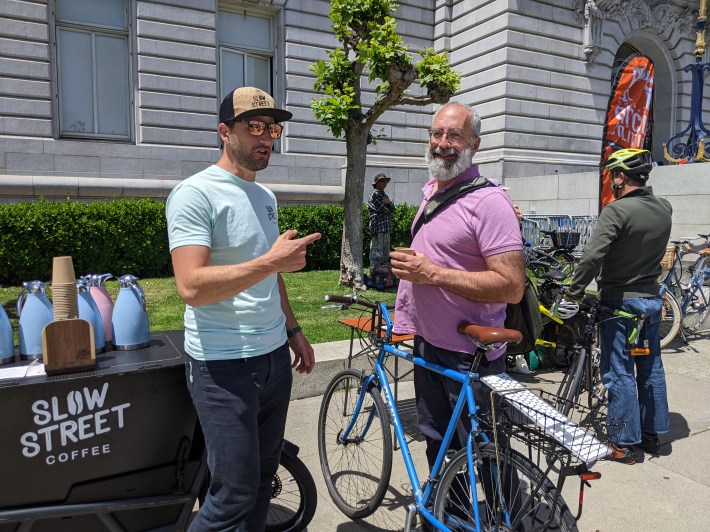
"I think we're finally making big progress," said Wiener. "Thank you, advocates, for never giving up."
"Someday, I hope everyone can fall in love with San Francisco from the seat of a bike," said White.
